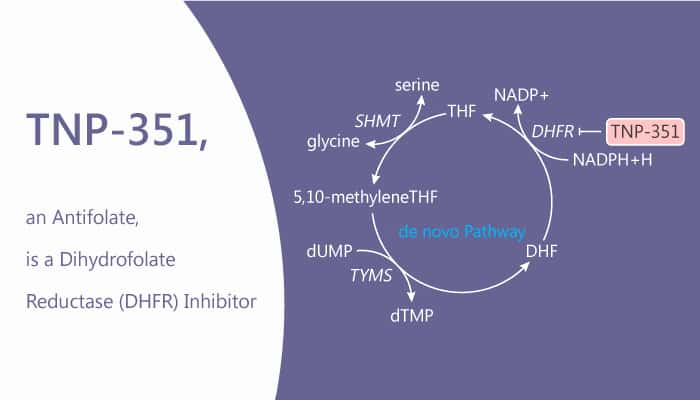Antifolates are a class of antimetabolite medications that block the actions of folic acid. Antimalarial antifolates have been central for prophylaxis and treatment of malaria. The success of antifolates in the treatment of tumors also leads to the use of this class of drugs in the treatment of other rapidly dividing cells such as bacteria and parasites. Folic acid’s primary function in the body is as a cofactor to various methyltransferases involved in serine, methionine, thymidine and purine biosynthesis. Consequently, antifolates inhibit cell division, DNA/RNA synthesis, and repair and protein synthesis. The majority of antifolates work by inhibiting dihydrofolate reductase (DHFR). TNP-351 is a potent DHFR inhibitor.

Folate inhibitors have served medical science well in neoplastic and non-neoplastic diseases. TNP-351 is a potent inhibitor of both L1210 and CCRFCEM cell lines in vitro. In addition, TNP-351 inhibits the proliferation of mouse L1210 leukemia cells and human CCRF-CEM lymphoblastic leukemia cells with ED50 values of 0.79 and 2.7 nM, respectively. In particular, antifolate TNP-351 has a cytotoxic effect on methotrexate-resistant CCRF-CEM cells. Furthermore, TNP-351 inhibits transformylases of de novo purine biosynthesis. TNP-351 is also an excellent substrate for folylpolyglutamate synthetase (FPGS). Moreover, TNP-351 is an inhibitor of AICARTFase with inhibition constant (Ki) of 52 μM. Researchers also demonstrated a faster uptake and higher accumulation (1.3-fold) of TNP-351 in the SBC-3/ADM100 cells than those in the parent SBC-3 cells.
Given the above, TNP-351, a potent antifolate, inhibits the growth of L1210 and CCRF-CEM cells in culture.